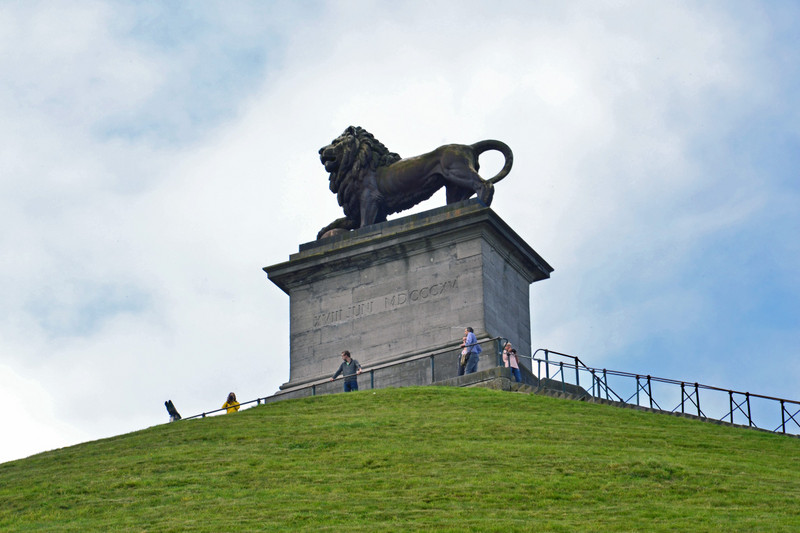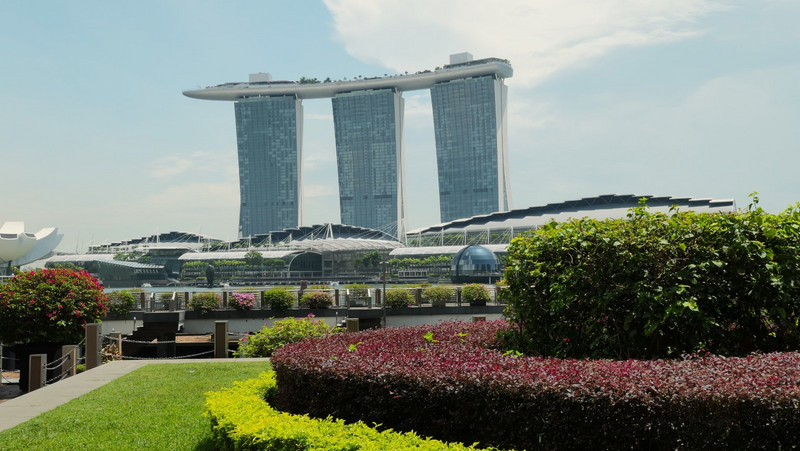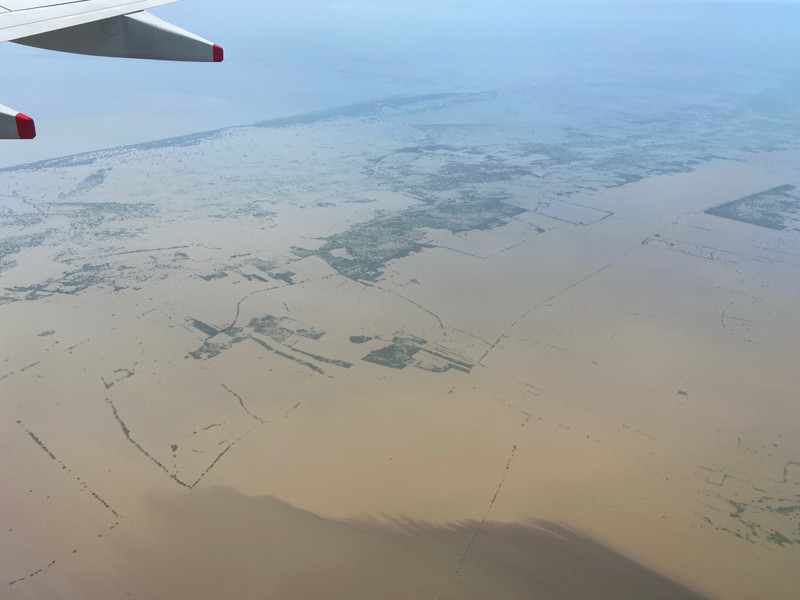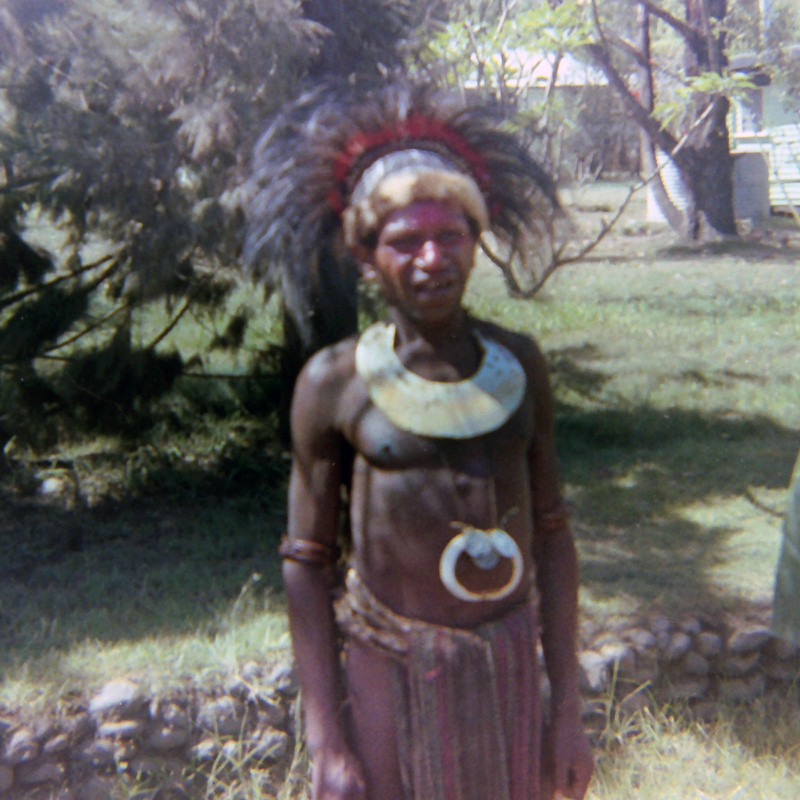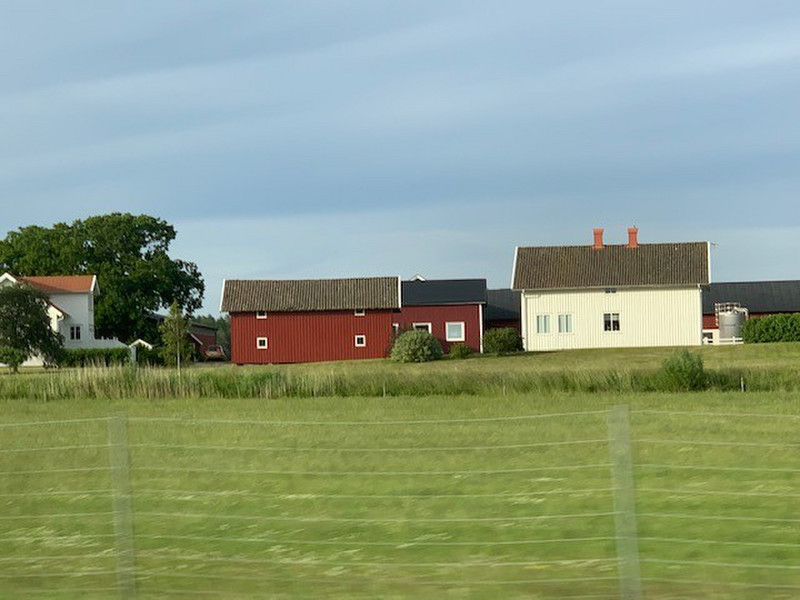Butte du Lion - Lions Mound on the battlefield of Waterloo. Installed in 1826 and inscribed XVIII JUNI MDCCCXV - 18 June 1815, the date of the battle. The mound is 141 ft. (43 m) in height. About 1/4 M. to the right rises the Mound of the Belgian Lion, 200 ft. in height, thrown up on the spot where the Prince of Orange was wounded in the battle. The lion was cast by Cockerill of Lige, with the metal of captured French cannon, and is said to weigh 28 tons. The French soldiers, on their march to Antwerp in 1832, hacked off part of the tail, but Marshal Grard protected the monument from further injury. The the best survey of the 1910. DSC_0770p1
From Luxembourg, our Globus tour traveled across southern Belgium. Once again we crossed Meuse River, at Lige and then at Namur. The Waterloo battlefield is south of the town of Waterloo, not far at all outside Brussels.
Waterloo is the Belgian battlefield where Napoleon met his defeat on 18 June 1815 and thus ended the Napoleonic Wars. People have to visit the site of the great Battle of Waterloo almost ever since it occurred. Baedeker documents a thriving tourist industry in the 1870s. I imagined a visit would be something very much like a visit to an American Civil War battlefield. That really is not the case. The battlefield is preserved, but it is fenced off and accessible only via a tram tour. The visitor center is adjacent to the Butte de Lion (Lions Mound). This is an artificial hill surmounted by a lion statue. It by William I of The Netherlands in 1826. The lion is supposedly made of melted French cannon. There are stairs up the mound for a wider view of the area of the battlefield, with admission. The visitor center has informative displays and films and there is also a
Panorama de la Bataile - Waterloo Cyclorama. Cyclorama painting of the Battle of Waterloo by Louis Dumoulin, 1912. DSC_0761
Panorama (cyclorama) painting of the battle. One film featured excerpts of the 1970 film with Rod Steiger and Christopher Plummer. Another traces the progress of the battle. Unfortunately, we did not have time to visit the cyclorama. The only regimental memorial to be seen was the roadside Monument to the Hanoverians at the turnoff for the Butte du Lion. There apparently are British memorials at locales within the fenced off battlefield, though I had expected to see more regimental memorials, like those at an American Civil War battlefield. Lunch was at the Caf Wellington, a part of the visitor center.
